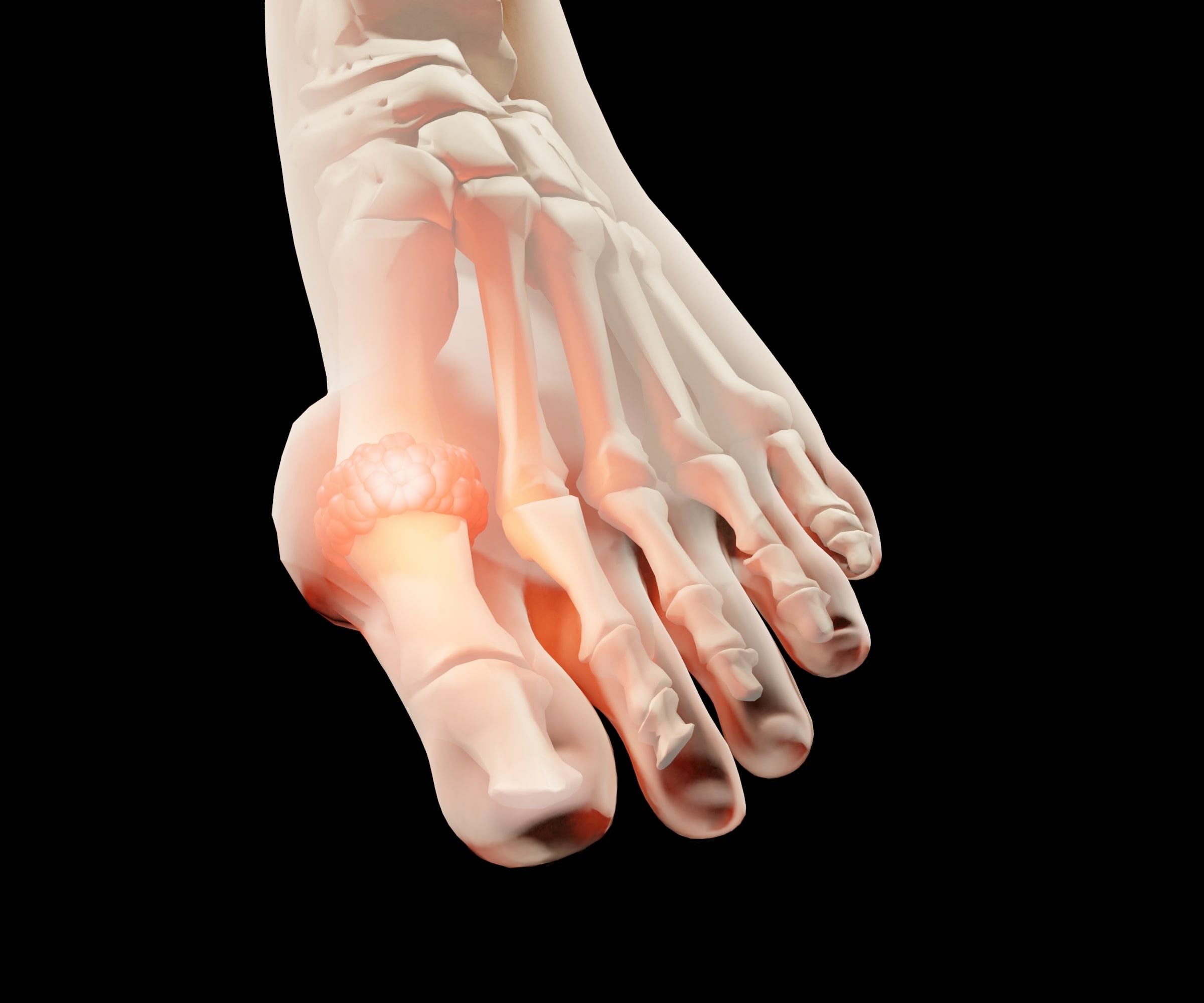What is the gout?
Gout is an inflammatory arthritis caused by the deposition of uric acid (monosodium urate crystals).
Uric acid is produced in the body as a product of the breakdown of nitrogenous bases or heterocyclic aromatic organic compounds known as purines.
Purines are not only found naturally in the body, but also in some foods such as red meat, organ meats and shellfish, and in alcoholic beverages. Diets containing foods rich in purines, and/or excessive alcohol consumption (especially beer) can precipitate an acute attack of gout.
Hyperuricemia (excess uric acid) either as a result of increased production or decreased excretion of uric acid can also be asymptomatic.
What characterizes an acute attack of gout?
A gout attack is characterized by sudden and severe joint pain, accompanied by swelling, redness, and warmth. The attack usually involves a single joint, although two or three joints may be affected simultaneously.
Commonly affected joints include the big toe, midfoot, ankle, knee, shoulder, wrist, and hand.
How long does an acute gout attack last?
An acute attack can last for days or weeks and is usually followed by symptom-free periods (weeks, months, or years) before another flare-up begins.
Can the disease become chronic?
Yes.When recurrent attacks occur after years, it is called chronic gout. Monosodium urate crystal deposits, over time, can cause joint deformities and even affect soft tissue and pressure points such as the Achilles tendon.
How is gout diagnosed?
The classic clinical presentation ( a hot, swollen, and painful single joint) is suggestive, but the diagnosis is confirmed with a laboratory test known as arthrocentesis (joint fluid aspiration) and a polarized light examination that shows the presence of uric acid crystals in the affected joint.
How is gout treated?
Conventional treatment for an acute attack consists of nonsteroidal anti-inflammatory drugs (NSAIDs), corticosteroids, and the anti-inflammatory drug colchicine.
Colchicine as a conventional medicine is effective when given within the first few hours of an attack and as part of preventive therapy to reduce the risk of another attack.
Since colchicine inhibits cell division and function, it has a very narrow therapeutic index, which means there is a small window in which this drug is beneficial, but if taken outside this therapeutic window, it can be significantly toxic and it is contraindicated in liver disease, kidney failure and heart failure due to its possible side effects (myelosuppression, myopathy and neuropathy)
Colchicine is found naturally in toxic plants and there is a homeopathic preparation of the plant that contains colchicine but without side effects or potential harm.
Homeopathic preparations used to treat gout are highly diluted, making them safe.
In addition to medication, some useful tips can help prevent future attacks such as: avoid high purine diet and avoid taking medications that can exacerbate hyperuricemia such as thiazide diuretics
If symptoms persist, worsen or recur frequently, it is important to consult your general practitioner, as frequent acute flare-ups or chronic gout may require more specific preventative therapy to lower blood uric acid levels, depending on whether uric acid is produced in excess or is not properly eliminated from the body.
03/31/2022
Nancy Dutto MD

